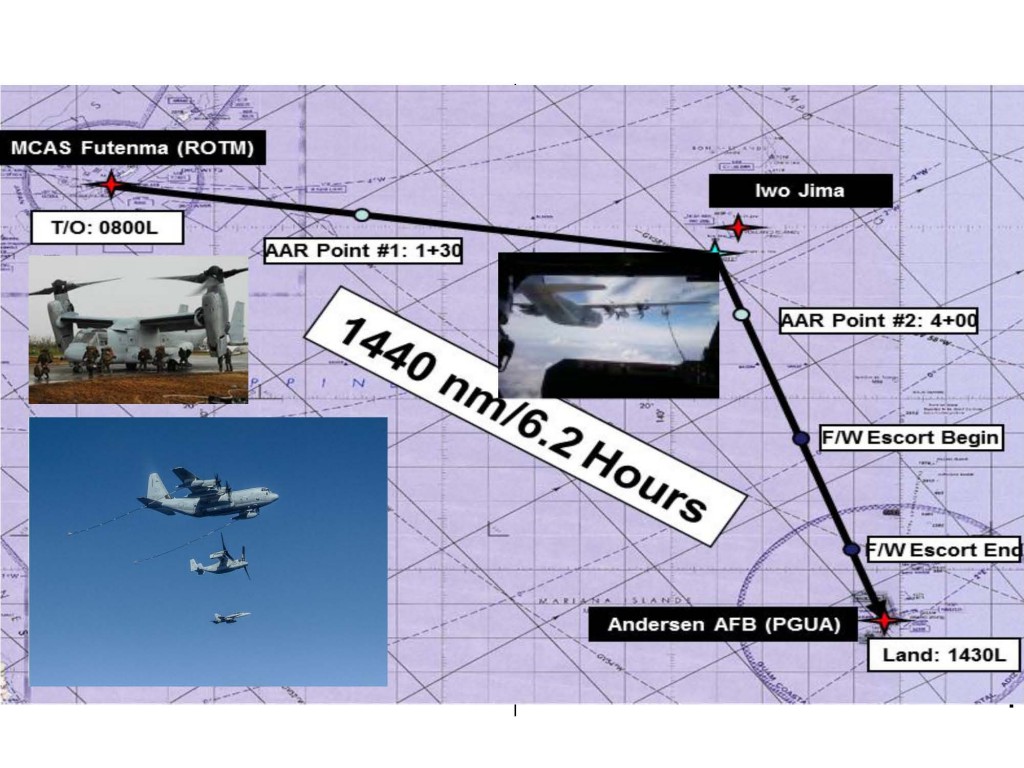2014-01-15 The recent Forager Fury II exercise was a test of the ability of the USMC, USAF and the USN to surge forces into key objective areas in the Western Pacific.
According to a story Airman 1st Class Emily A. Bradley, 36th Wing Public Affairs published on December 17, 2013:
Various units from the Air Force, Navy and Marine Corps came together to exercise their ability to conduct combat operations across the Pacific by participating in a nonstop operations surge Dec. 10 to Dec. 13 on Guam and the nearby island of Tinian.
The surge was part of Exercise Forager Fury II, a Marine Corps contingency exercise focusing on training units for combat situations in the Pacific theater. The exercise, which began Dec. 2, involved 1,200 Marines from Marine Corps Air Station Iwakuni, Japan, and was supported by approximately 400 Airmen and Sailors in various capacities. It is expected to end Dec. 18.
The recent surge component of Forager Fury II lasted 72 hours and kept a constant simulated fight between U.S. Armed Forces aircraft and enemy aircraft north of Tinian while simultaneously responding to simulated ground invasions on Guam.
The exercise also featured Marine aviation units assigned to Marine Aircraft Group (MAG)-12 – a subordinate unit of the Marine Aircraft Wing (MAW)-1 from Camp Foster, Japan. The aviation assets are made up of Marine Fighter Attack Squadron (VMFA)-112, deployed with MAG-12 and flying F/A-18A++ Hornets, VMFA-232, flying F/A-18Cs, VMFA-242, flying F/A-18Ds, Marine Air Refueler Transport Squadron (VMGR)-152, flying KC-130J Super Hercules and Marine Medium Tiltrotor Squadron (VMM)-262, flying MV-22B Ospreys.
Additionally, U.S. Air Force F-15C Eagles from the 18th Wing, Kadena Air Base, Japan, are training with the MAG-12 as part of their recurring Aircraft Training Relocation program, which allows U.S. military pilots from air bases in Japan to train in the Central Northern Marianas Island areas to fly more hours, drop live explosives and fire live munition rounds in training environments not available in Japan.
“The surge’s goal is to maximize the amount of (missions) in a 72-hour period,” said Marine Corps Lt. Col. Keith Topel, MAG-12 operations officer. “The surge is the main purpose of why we’re here. We are expected to operate cohesively and fight as a joint task force.”
The units continuously deploy aircraft into the air while also testing maintainers’ skills on the ground to sustain aircraft for flight.
The aircraft launched from Andersen Air Force Base, Guam, refueled at North Field, Tinian, which served as the forward air refueling point, before defending the area north of Tinian. The fuel at North Field was transported from West Field, Tinian, which acted as the forward operating base.
Service members were also evaluated on their ability to protect Guam from a hostile invasion on Andersen South, a training area located several miles from the main base. “The most important thing here is the inter-service training,” said Marine Corps Capt. Roy Agila, a MAG-12 assistant operations officer. “Each service has its own capabilities and the exercise gives us the ability to practice, without kinks or friction. Without practice, it’s chaotic in a real-world combat situation.”
The Navy’s Helicopter Sea Combat Squadron 25, an Andersen-based unit, had Sailors who were involved in a simulated rescue mission in a hostile environment north of Tinian, where Marines and Airmen pilots defended the island with F-15s and F/A-18s. The fighter’s mission ensured HSC-25’s rescue swimmers performed their rescues without being in harm’s way.
“This exercise also allows Marine and Air Force pilots to familiarize each other with many aircraft,” said Air Force Capt. William Strohecker, a18th Wing project officer. “It’s a nonstop aircraft fight while also trying to defend the helicopter and the person in the water.”
From the USMC side, one of the key capabilities exercised was the ability to move an insertion package – KC-130Js, Ospreys and F-18s at long distance and to insert that force with the F-18s engaging in air engagement to allow that force to enter into a contested objective area.
The graphic below provides a sense of the range covered by the insertion force which illustrates the flexibility of an insertion force supported by USMC air. The distance covered was 1440 nms. And was done in only 6.2 hours. Anderson AFB was established as the contested objective area for the purposes of the exercise.

The video above shows Ospreys involved in the exercise.
Marine Aircraft Wing and Marine Aircraft Group exercises and training on Guam and within the Mariana Island range complex demonstrated the aviation combat element capabilities of the Marine air-ground task force.
Aviation capabilities enable the MAGTF to project force or respond to crises throughout the Asia-pacific region. The Osprey are with Marine Medium Tiltrotor Squadron 262, Marine Aircraft Group 36 currently assigned to MAG-12, 1st MAW, III Marine Expeditionary Force.
Credit Video: American Forces Network, Iawkuni Japan, 12/10/13
http://www.ndu.edu/press/leveraging-challenges.html

